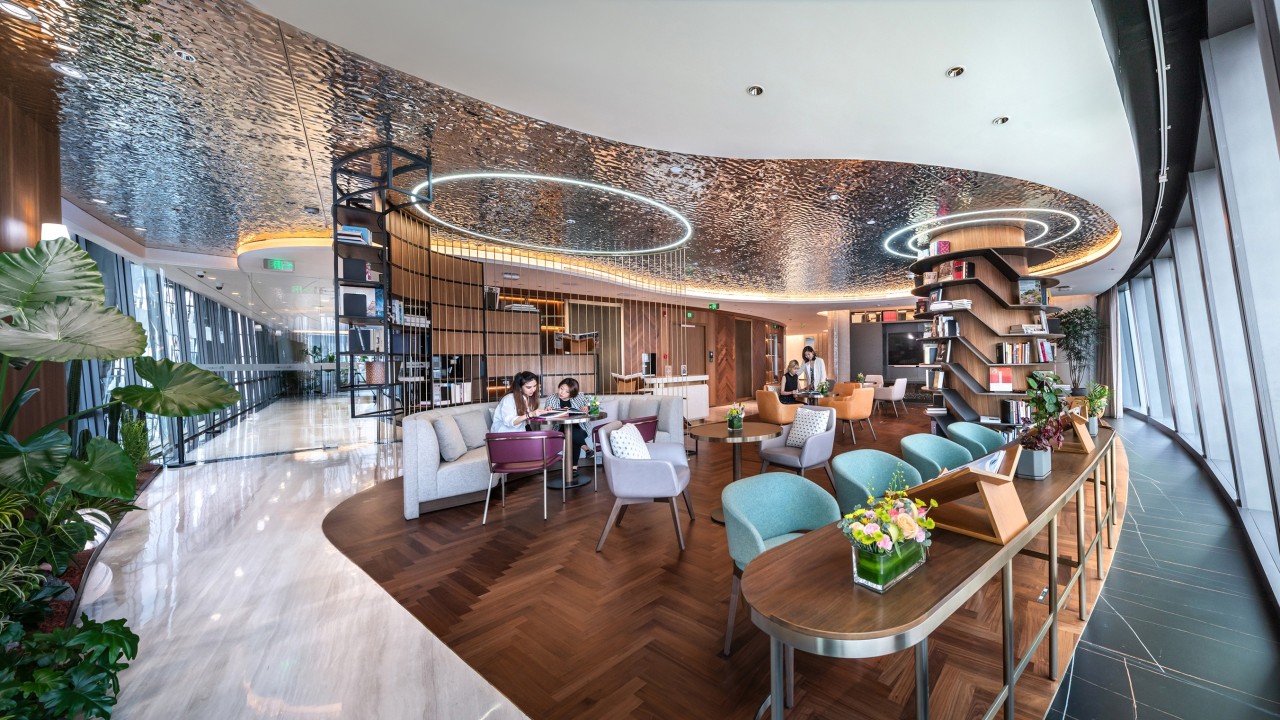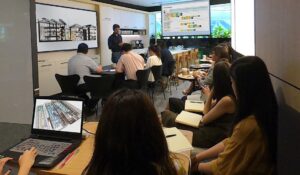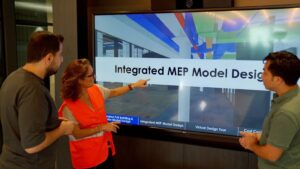Decompression Spaces: Why They Matter
As hybrid work models gain popularity, employees are returning to offices seeking more than just workstations. They need environments that support relaxation, focus, and creativity. Decompression spaces, designed thoughtfully, help employees refresh during the day. These aren’t just “break rooms”. They range from unusual or vibrant zones that have a marked difference to the rest of the office to meditative spaces where the corporate feel dissolves away, allowing employees to step away, mentally recharge, and come back more focused.
Studies have shown that spaces that offer opportunities for brief, intentional breaks help reduce stress, improve productivity, and increase employee satisfaction. For companies looking to reduce burnout and absenteeism, it would seem this can make a difference.
Types of Decompression Spaces
There’s no one-size-fits-all approach to designing decompression spaces. Depending on your office’s needs, these zones can take many forms and can also be quite multifunctional as well:
- Quiet Zones: These are calm, low-distraction areas where employees can retreat for focused work or a quiet break. These spaces often feature soft seating and noise-reducing elements.
- Social Zones: Informal, lively spaces for casual conversations and collaboration. Equipped with comfortable seating, these areas encourage interaction while offering a break from the corporate structure.
- Play and Entertainment Areas: Spaces for games, sports, or even creative activities. These areas provide an active, fun break from work and help foster community within the office.
- Wellness and Meditation Rooms: Soft, peaceful spaces designed to encourage mindfulness and relaxation. These rooms typically feature soothing décor and are perfect for employees seeking a mental refresh.
Each of these areas can be adapted to suit the unique rhythm of your workplace. Whether it’s integrating dynamic artwork, natural elements, or flexible furniture, the key is to create spaces that offer employees a real break from the typical office setting.
The CRE Professional’s Opportunity
For senior-level CRE professionals, incorporating decompression spaces into office designs offers strategic benefits. These areas not only enhance employee experience but also serve as a strong selling point for businesses looking to attract and retain top talent. Decompression spaces send a clear message: the company cares about its employees’ well-being and recognizes the value of mental rest.
Design Considerations
Decompression spaces must be carefully planned to suit the broader office environment. They should blend with the office’s workflow and be easily accessible. However, these spaces need to contrast the rigidity of typical corporate designs. With the right mix of vibrance, functionality, and flexibility or even serenity, decompression spaces can serve multiple purposes—from individual relaxation to group collaboration.
Future-Proofing Your Office
As workplaces continue to evolve, decompression spaces will only grow in importance. Forward-thinking CRE professionals who prioritize these spaces will not only improve the current office environment but also ensure their designs are adaptable to future needs.
Investing in well-designed decompression spaces today offers a future-proof solution, promoting better employee engagement, well-being, and long-term productivity.
References:
- Creating Calm: Employee Relaxation and Meditation Spaces – Psychology Today, August 2023.
- Redesign Your Office for Less Stress and More Productivity – Total Wellness Health, 2023.
- Recharge and Destress: Contemplative Spaces for Wellbeing at Work – Wellbeing in Your Office, 2023.
- The Future of the Workplace: Embracing Change and Fostering Connectivity – McKinsey & Company, 2022.
- Quiet Rooms Are Being Added by Firms to Help Employees Relax – Business Insider, April 2023.
- How Does Workplace Design Influence Employee Psychology? – Blue Monarch Group, 2023.




